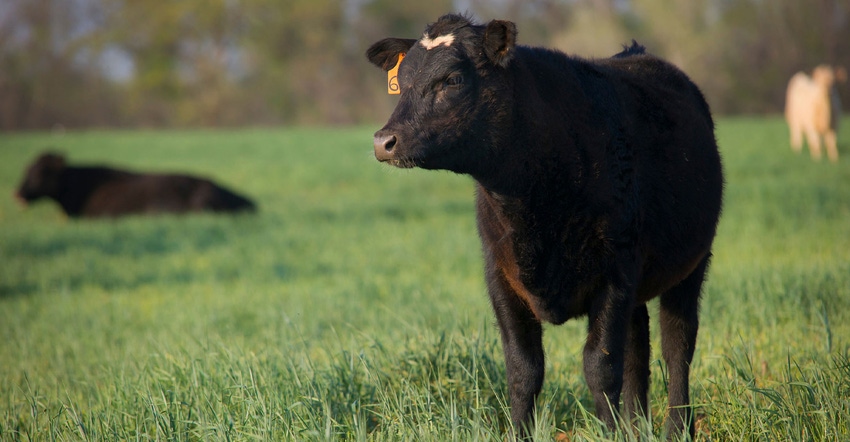
High feed grain prices have been an area of concern for livestock producers this year, leading many to look for more cost-effective alternatives to meet the nutritional needs of their cattle during fall and winter months.
There has been a steady increase in cost of gain in cattle going back to the summer of 2020. To combat this and assure the continued well-being of his livestock, Ellis County producer Kent Miller is planning on making full use of his native range and dual-purpose, graze-and-grain wheat pastures. Miller, who is the second of three generations working the family farm and ranch enterprise, said it’s key to pay attention to the details given as how most people’s profit-loss margins are too tight to risk their operations.
Noble County cattle producer Rodney Cook plans to make full use of available native range pastures as well. In addition, he intends to turn out his cattle on a cover crop of oats, turnips and other healthy forages for about four hours a day – an approach he has used for years with great success.
“We’re big on rotating pastures and making sure all our hay is tested,” Cook said. “Our family operation typically doesn’t go through a lot of feed, so unless something happens to our pasture resources, we should be able to weather the higher prices and cost of gain compared to previous years.”
Testing hay and pastures is vital to knowing for certain how the supplemental requirements of the cattle need to be met. OSU Extension has online resources to help producers take accurate samples, get them tested and use the analysis provided to create a feeding program that meets the nutritional needs of their specific herds.
Dave Lalman, OSU Extension beef cattle nutrition specialist, recently provided additional insights about hay testing, calculating herd nutritional needs and managing around high feed grain prices on the agricultural television show SUNUP.
Alfalfa
Some producers have asked OSU Extension county offices about using alfalfa as a cost-effective replacement for protein, according to agricultural educator reports.
“Producers need to be diligent with feeding accuracy when using alfalfa as a supplement,” said Dana Zook, OSU Extension area livestock specialist. “However, some sources of alfalfa could provide the protein needed, and potentially also provide added calcium and vitamin A that conventional cubed supplements lack. Speak with your local Extension agricultural educator who can answer questions in detail.”
Zook said producers need to be sure to compare costs of the ingredients by the nutrient needed when looking at supplemental replacements. For example, compare the cost per pound of protein in winter feeding situations when cows are on dry grass.
“Again, don’t skip on testing hay for protein and energy,” she said. “It can help the producer be more accurate when supplementing and thereby reduce costs. Every OSU Extension county office can send off a test for a minimal cost.”
Livestock operators may wish to take advantage of the OSU Cowculator, a Microsoft Excel spreadsheet designed to help producers make informed decisions about beef cattle nutrition. Criteria such as cow weight, body condition, stage of production and breed can be customized to each operation and to specific scenarios within an operation. Animal nutritional requirement and performance prediction are based on years of research data.
Source: is OSU, which is solely responsible for the information provided and is wholly owned by the source. Informa Business Media and all its subsidiaries are not responsible for any of the content contained in this information asset.
Read more about:
AlfalfaAbout the Author(s)
You May Also Like




